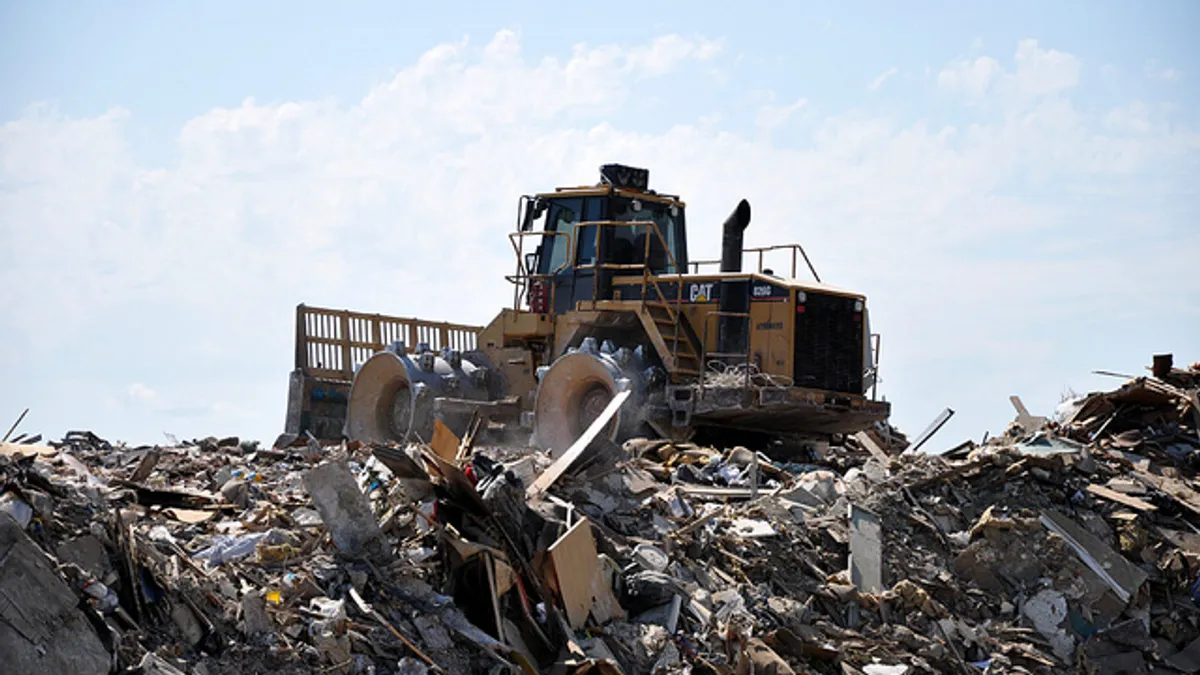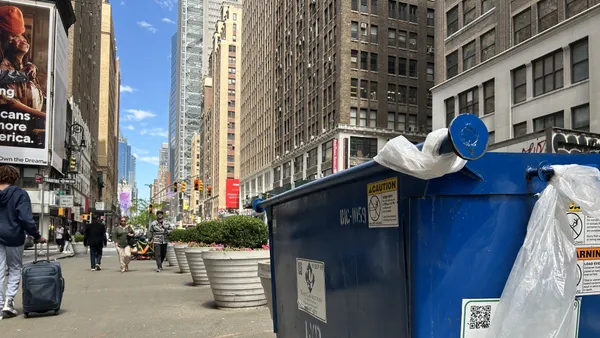UPDATE: Sept. 16, 2021: Rice Acquisition Corp. announced it has completed the combination of Archaea Energy and Aria Energy, and changed its name to Archaea following the deal. The company will trade on the New York Stock Exchange under the symbol LFG. "We are excited to complete our business combination, which enables us to continue rapidly developing our robust inventory of highly economic, low-risk RNG projects,” said Archaea CEO Nick Stork in a statement. "I am excited about the dedication we will continue to bring to reach our next phase of growth as the only scale producer of renewable natural gas."
Dive Brief:
- September 13: Archaea Energy and Aria Energy, two companies with multiple landfill gas-to-energy projects in their portfolios, are one step closer to merging after shareholders of Rice Acquisition Corp. — a special purpose acquisition company (SPAC) — approved on Sept. 9. The deal could close by Sept. 15.
- The SPAC will acquire Archaea for $347 million and Aria for $680 million in a transaction valued at an estimated $1.15 billion based on share prices. The combined companies will operate under the Archaea name to create a major renewable natural gas (RNG) platform with dozens of landfill and anaerobic digester projects operating or in progress.
- Aria has more landfill projects in operation currently, with a focus on electricity. Archaea has fewer active sites and is more focused on developing new RNG projects across states including California, Indiana, Kentucky and Maine. Another upcoming Archaea project, called Assai, will be at the Keystone Sanitary Landfill in Pennsylvania and the company describes it as the largest landfill RNG operation in the world.
Dive Insight:
The Archaea deal has attracted attention for its place in the recent SPAC trend, but more notably because of the financial potential it shows for RNG projects — especially those at waste sites.
While the industry has seen emissions reduction progress, landfills are among the largest U.S. methane sources — a potent contributor to climate change — and the sites account for an estimated 90% of major waste companies' Scope 1 greenhouse gas emissions. At the same time, more companies outside the industry are looking to procure RNG as part of their sustainability goals.
Gas capture potential is based on several factors, but U.S. EPA data indicate less than a quarter of the estimated 2,600 open and closed landfills have projects in place. According to a recent proxy filing, Archaea estimates only 13% of the volumes those projects cover are being converted to RNG. The majority of projects are generating electricity and steam, or are flaring the gas.
“We’re really trying to speed the construction and installation side of these projects," said Lauren Turner, Archaea's vice president of renewable partnerships, citing a goal to cut that timeline by as much as 50%. "Each day that goes by that you’re not capturing these emissions, it’s both contributing to emissions in those communities and you’re missing out on a valuable product."
Archaea was founded in 2018 by a group including the leadership of Pennsylvania-based hauler Noble Environmental, with funders including the energy-focused Rice Investment Group. Noble, which recently expanded its presence with the acquisition of multiple GFL Environmental assets, shares executive leadership with Archaea and has a minority interest in the company. Aria's history goes back more than 30 years, including many projects in the waste industry.
Patrick Serfass, executive director of the American Biogas Council, said this latest deal is a sign of a quickly growing industry and mirrors trends he saw during previous stints in other renewable energy sectors.
“Seeing big acquisitions happen is certainly one of those indicators," he said, adding that both of the companies involved have good track records, and their goal to develop projects more quickly will be key to reducing costs. "We’re a maturing industry, and the amount of time it takes to develop a project is still coming down."
According to a recent report shared by investment firm Stifel, landfills owned or operated by publicly traded companies more commonly have gas-to-energy projects compared with sites that municipalities or private companies run. Among the U.S. industry's five public companies with solid waste landfills, an estimated 85% of the projects are low- and medium-BTU applications. Prior renewable energy credits and emissions regulations spurred those projects, and their capital costs are notably lower, but multiple factors are making the high-Btu RNG projects increasingly attractive.
Dozens of RNG projects are currently active or in progress across sites each public company runs, with the potential to create fuel for a variety of applications. Generating credits from regulatory setups such as California's Low Carbon Fuel Standard (LCFS) and the federal Renewable Fuel Standard (RFS) is a key part of the revenue equation, though the value of RIN credits under the latter system has been volatile in recent years.
According to Stifel, Waste Management currently has 16 projects with RIN exposure. Republic didn't disclose its number for the report, and Waste Connections has eight. Traditionally, many of the lower-Btu projects have been outsourced to third parties who take a royalty, but the higher-Btu projects could be wholly owned or developed with a partner. Price hedging for RINs may also become more common.
"Operating a [landfill gas] plant is unique enough that outsourcing/partnering with an operator/developer makes a lot of sense," wrote Managing Director Michael E. Hoffman and other Stifel analysts in the report, adding that the popular high-BTU projects are often tied to RIN values. "Increasingly, [solid waste] needs to address the volatility of RIN credits, so they do not simply replace recycled commodity volatility (which has been meaningfully moved to a process fee) with RIN volatility."
Archaea sees a variety of options to partner with landfill operators and aims to focus an estimated 65% of its RNG volumes on long-term fixed price agreements to help bring more stability to the business. Turner said a key part of this is finding large customers that want alternative gas options to help meet their sustainability goals.
“There’s still growth to be had in the transportation fuel market, but now you have organizations and companies committing to net-zero emissions," she said. "You procure as much solar and wind as you can, but then you get into the difficult-to-decarbonize parts of your operation."
Serfass said this trend is a relatively recent one, driven by companies often looking to reduce their Scope 1 and Scope 3 emissions outside of regulatory requirements.
"We have this growing voluntary market which is largely driven by ESG interest and ESG investors," he said, adding that the next step in many cases is developing the necessary physical and policy infrastructure for gas utilities to sell RNG directly to their customers. "That whole wave of regulatory changes is really just coming over the U.S. right now."
Going forward after the deal closes, Archaea plans to convert more than a dozen of its existing landfill gas-to-electricity projects into RNG sites and sees the landfill sector as "highly fragmented," offering opportunities to acquire more companies and scale up organically. Archaea is also exploring possibilities such as carbon sequestration and hydrogen production, which help reduce carbon intensity under the LCFS and may also tap into evolving federal tax credits.










